Home › Forums › The Colonial Era › The Enslaved People of Riverdale, Kingsbridge, and Spuyten Duyvil › Reply To: The Enslaved People of Riverdale, Kingsbridge, and Spuyten Duyvil
Enslaved people also inhabited what is probably the oldest house in The Bronx–the Van Cortlandt Mansion in today’s Van Cortlandt Park. Jacobus Van Cortlandt (1638-1739) purchased the property in the late 1600’s. A 1698 census of “Fordham and Adjacent Places” listed the people held in slavery by Jacobus’ Van Cortlandt as: “hetter, tonne, marce, and hester.” By the time of Jacobus’ death, he had more enslaved workers, which he willed to his son, Frederick. According to Jacobus’ will of May 12, 1739 Frederick Van Cortlandt was to receive Jacobus’ “Indian Man Slave named Pompey [his] three Negro men Slaves called Piero John and Frank and [his] two Negro Women Hester & Hannah togr. with all the Children that are already or hereafter shall be born of the Body of the said Negro Woman named Hester (except such of the said Children as I may think fit in my life time to dispose of by Deed or Gift or otherwise).” In 1748, Frederick began work on the Van Cortlandt Mansion.
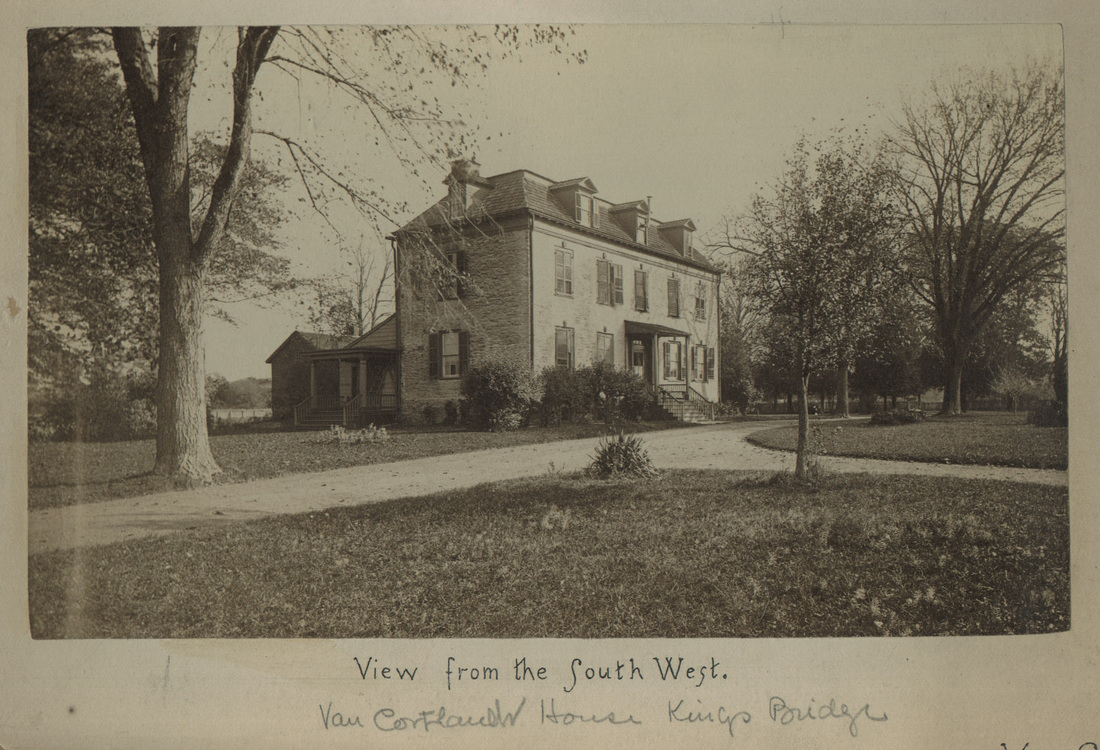
In 1749, Frederick wrote his will. The number of enslaved people on the family estate only increased in the 10 years after his father’s death. Frederick bequeathed “unto [his] wife Frances [his] two Negro Girl Slaves Mary and Hester with my two and four wheal chaise to sell or dispense of as she . . . shall think fitt.” Along with the mansion, he left to his son James Van Cortlandt: “[his] Negro Man Levellie the Boatman, and all my wagons, plows, and utensils, in full bar to all claim as [his] eldest son.” Frederick’s will continues: “I do also give and bequeath unto my said Son James the following Negro Slaves to witt piero the Miller and Hester his Wife and little Pieter the Son of Piero with my Indian Man Cesar and Kate his Wife. . . I give and Bequeath unto my daughter Anne the negro Girl called Hannah and to my Daughter Eve the Negro Girl Sare. . . To my Son augustus I give my Negro boy Claus and to my Son Frederick I give my Negro Boy called little Franke.” That is a total of 12 slaves. In Frederick’s will we find the second reference to an enslaved Indian person. His father had an enslaved Indian named Pompey and Frederick held an enslaved Indian named Cesar, who had a wife, Kate. It makes me wonder just how common Indian slavery was in the area. Frederick’s slave, “Piero the Miller,” is also noteworthy. In those times, millers were considered skilled professionals–given the complex mechanics of water mills and the difficulty in maintaining millstones. I wonder how common it was for slaves to have these sorts of occupations. Curiously, at Frederick Philipse’s “Upper Mills” on Philipsburg Manor, another enslaved person, Cesar, was also working as a miller. Apparently, Cesar made a small fortune for Philipse, who charged the neighboring farmers a percentage of their grain for the right to use the mill–on top of the rents he charged them for the land. Perhaps Piero made a similar fortune for the Van Cortlandt family. The Van Cortlandt mill, pictured below, was located at the southern end of Van Cortlandt lake, and stood until 1911 when it burned down.
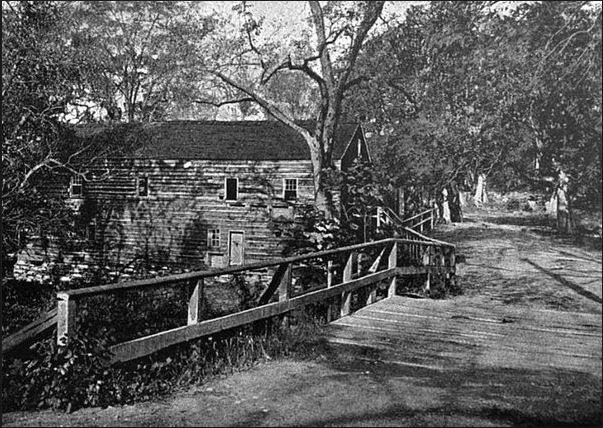
Its location is labeled in this British intelligence map from the American Revolution (a small section of a map that can be found at the Clements Library at the University of Michigan):
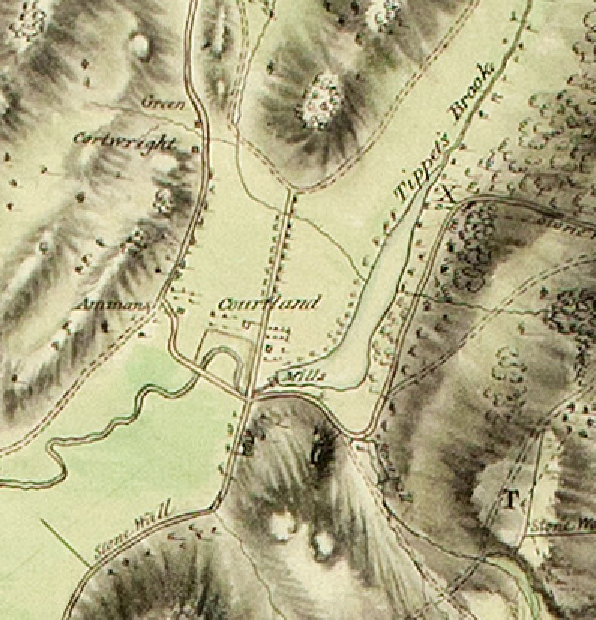
One of the millstones can still be found in the park in the brick walk south of the mansion.

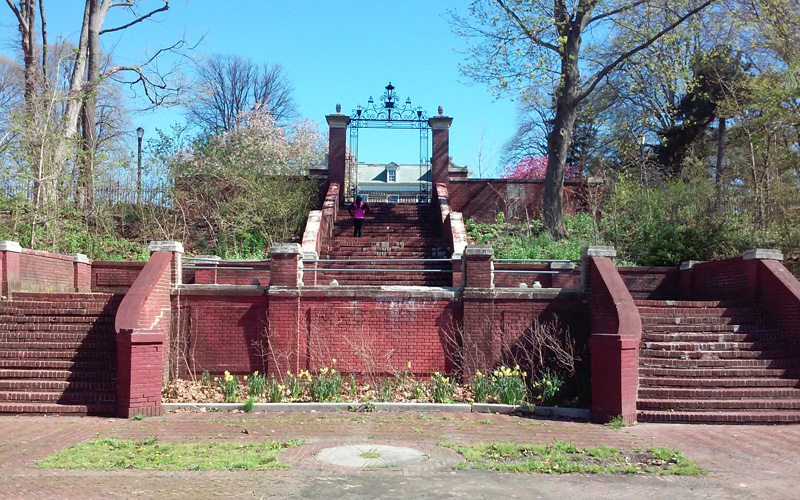
James Van Cortlandt inherited the majority of the enslaved people and he lived with them at Van Cortlandt mansion. His brother Frederick (Frederick Van Cortlandt II), who inherited a little boy named Franke, also lived in the area but not at the mansion. Frederick Van Cortlandt II lived at the “Upper Cortlandts,” in the vicinity of present-day Ethical Culture Fieldston school near West 238th Street. There was a Hessian Jaeger encampment there during the American Revolution and, despite the lack of documentary information, it is depicted on several maps such as the one below from Historic Hudson Valley, where you can see “F Courtland” labeled to the southwest of “Col. Courtlands”:
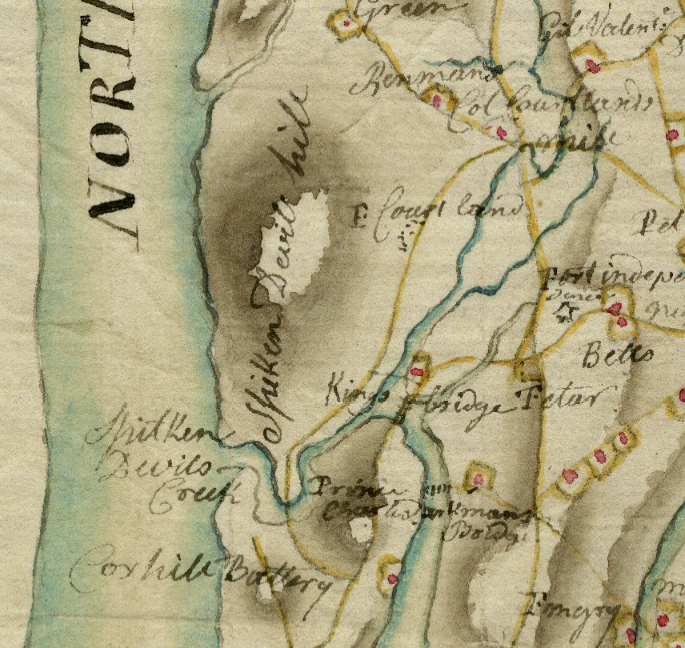
The below map from the Library of Congress depicts the area around Kingsbridge in 1778 and shows “Fred Courtlands” west of Tibbett’s brook by the “Corps of Yagers.” This would be the height now occupied by the Fieldston School’s campus.
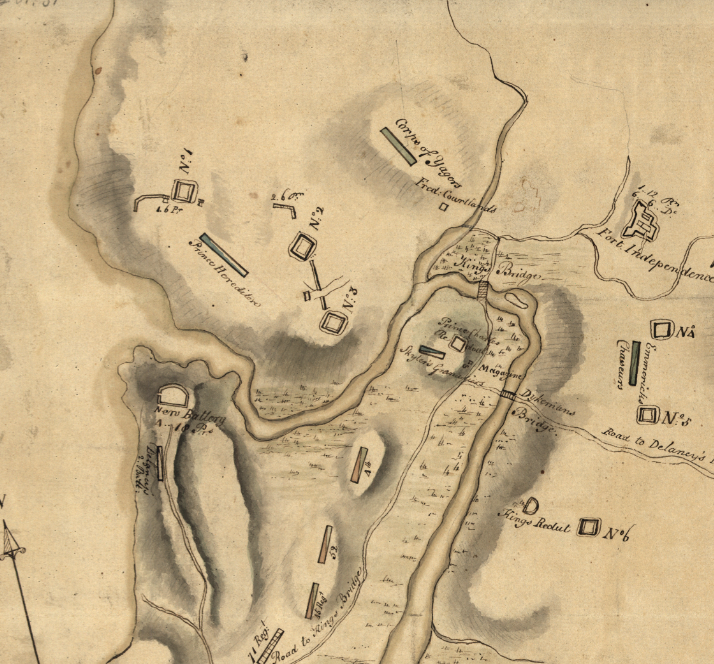
The 1782 British Headquarters map gives the most detailed depiction of the “Upper Cortlandts” showing three buildings:
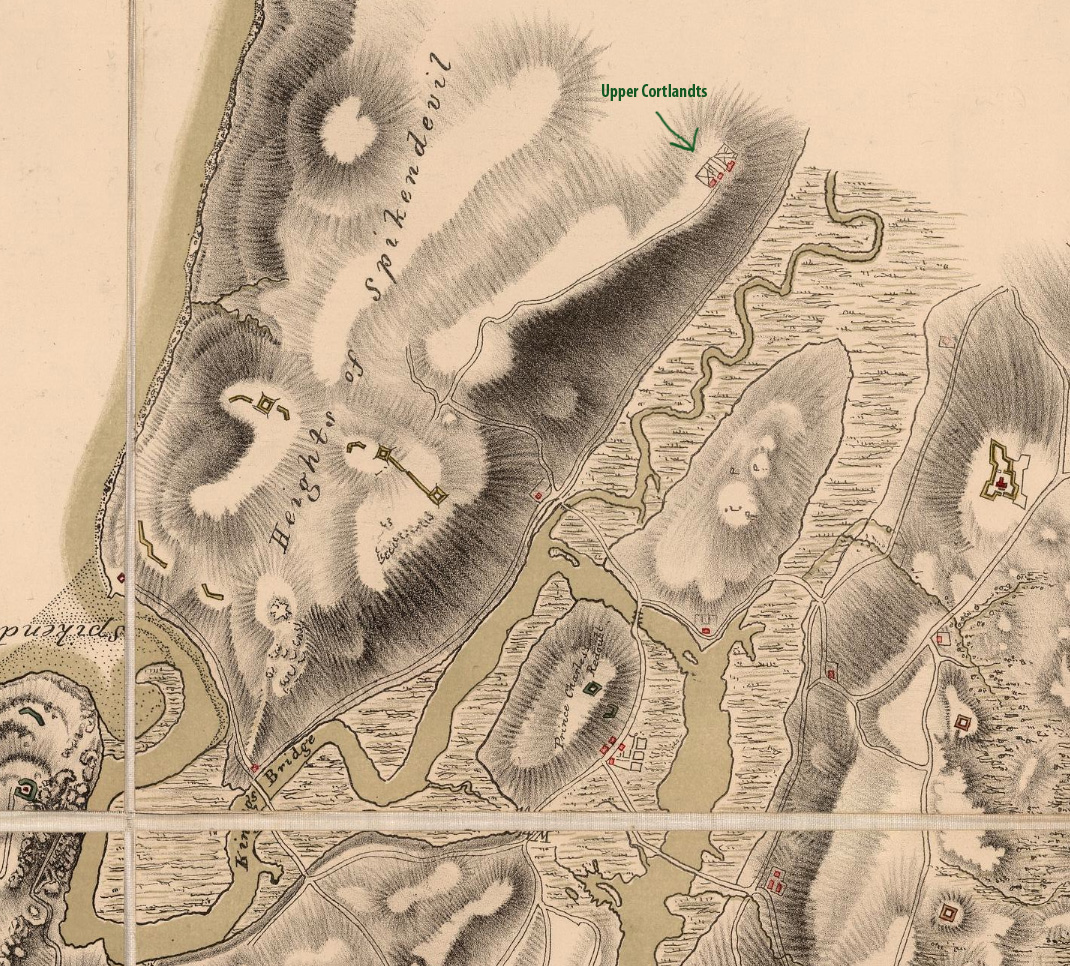
Frederick Van Cortlandt (the First) left several enslaved people to his wife, Frances Van Cortlandt, who died in 1780. Her will dated 1771 states:
My will further is, that my said Daughter Ann Van Horne may have the Choice of any one of my Negro Girls, which I shall leave undisposed of, at the time of my Decease. Item I give and bequeath my Negro Girl Susan to my Daughter Eve and my Negro Wench Hester, and my Negro Boy Pero unto my Son Frederick. Item my Negro Man John who now lives with my Said son James I leave and bequeath unto him. Item all the rest Residue and Remainder of my whole Estates as well as well Real and personal whatsoever and wheresoever, I give Devise and bequeath unto my five Children James, Augustus, Frederick, Ann and Eve, and the Heirs Executors Administrators and assigns for Ever, Equally to be shared and divided between them share and share alike.
This brings the total number of enslaved people that Frederick Van Cortlandt II inherited to three. Apparently, however, he felt that he needed more and by 1790, according to the census, Frederick held nine enslaved people. It stands to reason that they lived with Frederick II and his wife at their residence at Upper Cortlandts near today’s Fieldston School Campus.
In 1909 the City History Club of New York published a Historical Guide to the City of New York. It is basically a mix of local lore and real history and it contains some interesting notes about this “Upper Cortlandts” area. Below is a map from the book:

Points 21 and 23 on the map are located right in that area around 238th Street between Waldo Avenue and Riverdale Avenue. The points are described below:

If it is indeed true that the Waldo Hutchins estate house incorporated Frederick Van Cortlandt’s dwelling, then images of the building do exist. The below photos are taken from the auction pamphlet distributed for the sale of the Waldo Hutchins estate.
The photo on the cover depicts a building clearly built after the 18th century:

Inside, however, we can see photos of an older looking house captioned: “Hutchins Colonial Mansion at Premises.”

It seems that the building in the photos was indeed the homesite of Frederick Van Cortlandt II and part of the colonial “Upper Cortlandts.” The mansion house in today’s Van Cortlandt Park was passed on to James Van Cortlandt’s brother, Augustus, who resided there until 1823–living into his mid-90’s. According to the above-mentioned 1790 census, Augustus held 17 enslaved people at the plantation.
-
This reply was modified 6 years ago by
 ndembowski.
ndembowski.
-
This reply was modified 6 years ago by
 ndembowski.
ndembowski.